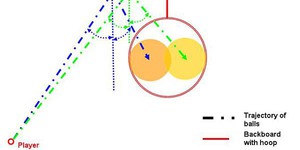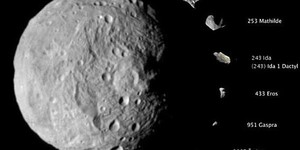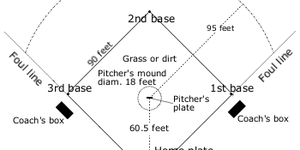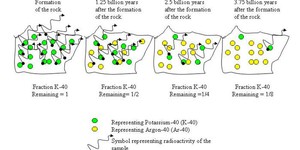High School, Make a Math Model Science Projects (6 results)
Build an abstract math model that helps you predict or make decisions about a real-world question. Learn why math equations matter by using a logistic model to predict when endangered animals need help or apply geometry to find the best places to bank a basket in basketball.
|
If you've ever played or watched basketball, you might already know that your chances of successfully banking a shot on the backboard are higher in certain positions on the basketball court, even when keeping the distance from the hoop the same. Ever wondered what would account for this? Do you think you could actually explain this using geometry? This science project will put your knowledge of geometry and algebra to good use. You will calculate and quantify how much more difficult it is to…
Read more
You've heard of gold mining and coal mining, but think outside the box...or the planet...what about asteroid mining? Scientists, engineers, and business people believe asteroid mining is feasible, and they are in the beginning stages of long-term plans to mine asteroids for valuable resources during space missions. You don't want to miss out on all the fun; in this science project, you will come up with your own scientific plan for an asteroid mining company. We will help get you started by…
Read more
New
Does your dog get bored when you are not home? Do you ever toss them a few treats right before you head out the door? What if you could keep them busy by automatically dispensing treats throughout the day? What about training them to sit in a certain place or even press a button by automatically rewarding them with treats? In this project you will build your own automatic dog (or cat, or other pet) treat dispenser that you can customize to react to different sensors.
Read more
Social media is all the buzz on the internet. What can we do with all the information generated by millions of people posting, tweeting, taking pictures, and chatting? How do companies convert it into profit? While you do not have the tools to analyze data from millions of social media posts by yourself, you will be able to analyze a scaled-down version. Follow the instructions in this project to try your hand at extracting data from a couple of social media sites and use it to create…
Read more
Have you ever wondered how playing in a certain stadium affects how well the athletes perform? Major League Baseball (MLB) is played in ballparks that have their own individual quirks when it comes to the exact layout of the field. How an individual ballpark affects player performance, which is known as ballpark effects, is heavily investigated in the field of baseball. To name just a few parks and their different traits, Fenway Park (the long-time home ballpark for the Boston Red Sox in…
Read more
When is an animal considered endangered? When will it become extinct? What happens when a population has reached the limits of its resources? What happens to a population when a habitat changes? These are some of the questions population biologists try to answer. They use population models, created from math equations, to predict what will happen to a population over time. If you want to see how modeling is done and make some predictions of your own, you certainly won't need a crystal…
Read more
New
Have you ever noticed that on a hot day, it's more comfortable to wear a light-colored shirt than a dark one? Or that it's cooler in a park than walking down a street? This happens because different surfaces absorb and reflect heat in different ways. Urban heat islands are parts of cities where man-made surfaces like pavement and buildings replace natural surfaces like grass and trees. In this project, you will use temperature and satellite data to see if certain areas in a city have higher…
Read more
What do rocks and clocks have in common? Both keep track of time.
Yes, radioactive isotopes present in rocks and other ancient material decay atom by atom at a steady rate, much as clocks tick time away. Geologists use those radioactive isotopes to date volcanic ash or granite formations like the giant Half Dome in Yosemite National Park. Anthropologists, archeologists, and paleontologists also use radioactive isotopes to date mummies, pottery, and dinosaur fossils. Does this sound abstract…
Read more
|
Explore Our Science Videos
Make A Tissue Paper Parachute - STEM Activity
Make an LED Night-Light
Is the Egg Raw or Cooked? STEM activity













